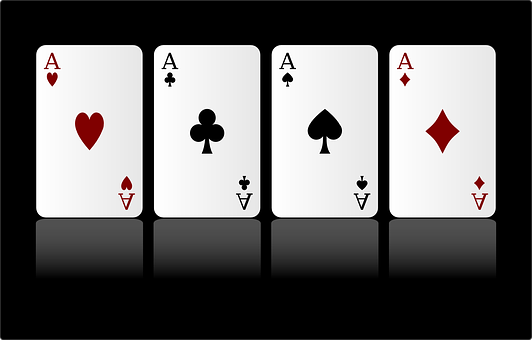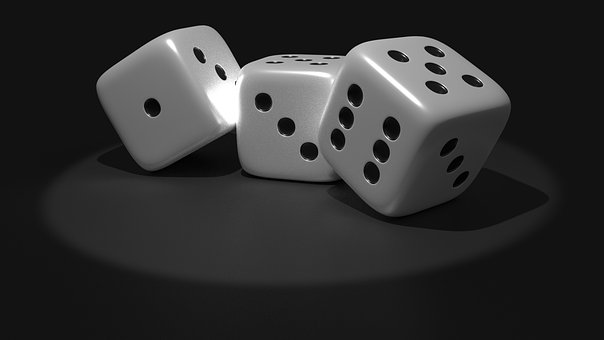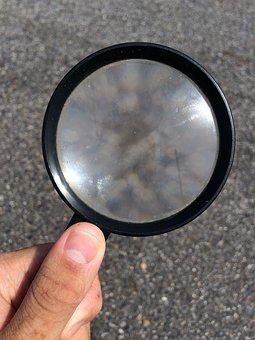If Hayley studies for five hours a day for 30 days leading up to the GMAT, what’s the probability that she’ll meet her goal GMAT score?
While you won’t see a question exactly like that on the GMAT, you’ll encounter a number of probability questions on the quantitative section of the GMAT. Many GMAT test-takers are intimidated by probability questions, but if that’s you, don’t worry! In this guide, I’ll teach you everything you need to know to conquer probability on the GMAT.
First, I’ll walk you through the four essential GMAT probability rules you’ll need to answer every probability question. Then, I’ll offer several other tips for acing probability questions. Next, I’ll walk you through four sample GMAT probability questions with explanations. Finally, I’ll give you some tips on practicing for probability questions. What’s the probability that you’ll ace probability GMAT questions after reading this guide? Pretty high, I’d say.
The 4 GMAT Probability Rules You Need to Know
For many test-takers, probability seems incredibly complicated. How can you possibly predict how likely an event is to occur?
However, probability (even on the GMAT) is actually pretty simple. As you may know from other reading you’ve done on the GMAT quantitative section, the GMAT quantitative section only tests high school math concepts. That means that you only need to know basic, high school level probability rules to do well on the test.
Not sure how or what to study? Confused by how to improve your score in the shortest time possible? We've created the only Online GMAT Prep Program that identifies your strengths and weaknesses, customizes a study plan, coaches you through lessons and quizzes, and adapts your study plan as you improve.
We believe PrepScholar GMAT is the best GMAT prep program available, especially if you find it hard to organize your study schedule and don't want to spend a ton of money on the other companies' one-size-fits-all study plans.

In this section, I’ll walk you through the four basic GMAT probability rules you need to do well on the GMAT quant section.
#1: Probability Equals the Number of Desired Outcomes Divided by the Number of Possible Outcomes
What does probability really mean? Well, it’s basically a way of figuring out how likely something is to happen.
You can figure out the probability of an event occurring (such as getting heads when you flip a coin) by dividing the number of desired outcomes (in this case, heads), by the number of possible outcomes (in this case, two: heads or tails).
So, the probability of getting heads when you flip a coin is $1/2$.
Obviously, not all probability questions will be the simple. But developing a good understanding of what probability actually means will help you figure out the answer to a question. If you’re trying to find the probability of something happening, remember that you first need to figure out how many desired outcomes there are and how many possible outcomes there are.
#2: The Probability of Two Discrete Events Occurring Is the Product of the Two Individual Probabilities
You can find the probability of two discrete events happening by finding the product of the two individual probabilities. What does that mean?
Well, a discrete event is basically an event that occurs which doesn’t have an effect on another event. So, if you flip a coin twice, each coin flip is its own event. They don’t affect each other.
So, to find the probability of two discrete events happening, you need to first find the individual probabilities. We already know that, when you try to get heads while flipping a coin, the probability is $1/2$. So, to find the probability of flipping a coin twice and getting two heads is $1/2 x 1/2$.

#3: The Probability of Getting One or Another Result Is the Sum of the Two Probabilities
The probability of getting one result or another means that you’re looking for one singular event to happen. So, if you’re looking to find the probability of flipping a coin and getting heads or tails, you will find the sum of the two probabilities.
The probability of flipping a coin and getting heads is $1/2$; the probability of flipping a coin and getting tails is $1/2$. So, the probability of flipping a coin and getting heads or tails is $1/2 + 1/2$ (or, 1).
#4: The Probability of Something Not Happening Is One Minus the Probability That It Will Happen
If you’re trying to find the probability of something not happening, first you need to find the probability that it will happen. Sound backwards? Trust me; it’s simple!
If you’re trying to find the probability of flipping a coin and not getting heads, first find the probability of flipping a coin and getting heads. Remember, that probability is $1/2$.
Next, subtract that probability from 1.
So, the probability of flipping a coin and not getting heads is $1 – 1/2$. What’s $1 – 1/2$? Well, it’s $1/2$, of course! And if you remember, $1/2$ is also the probability of flipping a coin and getting tails… or, in other words, the probability of flipping a coin and getting an outcome that’s not heads.
That’s it! Those are the four simple probability rules you need to ace the GMAT probability questions you see. Don’t worry if you’re still a bit nervous. In the next section of the article, I’ll talk about how to apply those four rules by showing you four sample probability GMAT questions.

Sample GMAT Probability Questions
In this section, I’ll walk you through how to solve different sample probability GMAT questions. First, I’ll show you two examples of problem solving questions that use probability. Next, I’ll show you two examples of data sufficiency questions that use probability.
Problem Solving Sample Question 1
Raffle tickets numbered consecutively from 101 to 350 are placed in a box. What is the probability that a ticket selected at random will have a number with a hundreds digit of 2?
- $2/5$
- $2/7$
- $33/88$
- $99/250$
- $100/249$
For probability questions, we first want to figure out what we’re trying to find out. Or, in other words, what event are we determining the probability for?
We’re trying to figure out the probability of reaching into a box one time and pulling out a number that has a hundreds digit of 2.
Want to improve your GMAT score by 60 points?
We have the industry's leading GMAT prep program. Built by Harvard, MIT, Stanford, and Wharton alumni and GMAT 99th percentile scorers, the program learns your strengths and weaknesses and customizes a curriculum so you get the most effective prep possible.

Remember, probability is number of desired outcomes / number of total outcomes.
Let’s look for total outcomes first. Since the numbers in the box span from 101 to 350, there are 250 total outcomes. Don’t get tricked here! If you subtract 100 from 350, you’ll get 249. But you need to remember to count the number 350. So there are 250 total outcomes.
Next, let’s look for desired outcomes. Our desired outcome is any number with a hundreds digit of 2. Since the numbers go from $101 – 350$, there will be 100 numbers with a hundreds digit of 2.
Probability is desired outcomes over total outcomes. So, probability of finding a number with a hundreds digit of 2 is $100/250$, or $2/5$.
The correct answer is A.
Problem Solving Sample Question 2
The probability that event M will not occur is 0.8 and the probability that event R will not occur is 0.6. If events M and R cannot both occur, which of the following is the probability that either event M or event R will occur?
- $1/5$
- $2/5$
- $3/5$
- $4/5$
- $12/25$
This question is the type of GMAT probability question that often confuses test-takers. However, we can use our four simple rules to easily solve it.
We’re trying to find the probability that either event M or event R will occur. Remember, when you’re trying to find the probability of an either or question, you will add the two probabilities. So, to figure out the probability of either event M or event R occurring, we need to add the probabilities of event M and event R occurring.
Now, let’s find out what the probability of events M and R occurring are.
Let’s start with event M. The probability of event M not occurring is 0.8. That means we can work backwards to figure out the probability of event M occurring. You figure out the probability of an event not occurring by subtracting it from 1. That means we can reverse that process and subtract 0.8 from 1 to find the probability of event M occurring. $1 – 0.8 = 0.2$. 0.2 is the probability of event M occurring.
We can do the same thing for event R. The probability that event R will not occur is 0.6. So, the probability that event R will occur is $1 – 0.6 = 0.4$.
Now, we add our two probabilities together. $0.4 + 0.2 = 0.6$. There is a 0.6 probability that event M or event R will occur.
Last but not least, we need to convert our decimal into a fraction. 0.6 = 3/5, so our correct answer is C.
Data Sufficiency Sample Question 1
Each of the marbles in a jar is either red or white or blue. If one marble is to be selected at random from the jar, what is the probability that the marble will be blue?
Want to Identify YOUR GMAT Strengths and Weaknesses?
Our proprietary GMAT Diagnostic Assessment creates a customized study plan for you that takes you from registration all the way to test day! It is included with every account and proven to significantly maximize your score.
Get your personalized assessment as part of your 5 day risk-free trial now:

- There are a total of 24 marbles in the jar, 8 of which are red.
- The probability that the marble selected will be white is 1/2.
- Statement (1) ALONE is sufficient, but statement (2) alone is not sufficient.
- Statement (2) ALONE is sufficient, but statement (1) alone is not sufficient.
- BOTH statements TOGETHER are sufficient, but NEITHER statement ALONE is sufficient.
- EACH statement ALONE is sufficient.
- Statements (1) and (2) TOGETHER are NOT sufficient.
For data sufficiency questions, we need to evaluate each statement alone before evaluating the statements together. Let’s look at statement (1) first.
We’re trying to figure out what the probability is that a marble will be blue when selected at random from a jar. That means we need to figure out the number of desired outcomes and the number of total outcomes.
Statement (1) tells us that there are 24 marbles in the jar. That means that we know the number of total outcomes: 24.
However, statement (1) doesn’t give us any information about how many blue marbles there are in the jar. We know that there are eight red marbles, but we have no way of using that information to figure out how many blue marbles there are. That means we don’t know how many desired outcomes there are.
Let’s look at statement (2) by itself now.
Statement (2) doesn’t tell us how many marbles there are in the jar. That means we don’t know the total outcomes. It also doesn’t tell us the desired outcomes, because we have no idea how many blue marbles are in the jar. So, statement (2) alone is not sufficient.
Now, let’s take the two statements together. We know that there are 24 total outcomes. We know that there are 8 red marbles. (We know both of these things from statement [1]).
If we add in our information from statement (2), we can figure out that there are 12 white marbles. Since the probability of picking a white marble is $1/2$, we can find that $½(24) = 12$.
We know now that there are 8 red marbles and 12 white marbles in the jar. From there we can figure out that there are 4 blue marbles in the jar ($24 – 8 – 12$ = blue marbles).
4 is therefore our desired outcome. So, our total probability of picking a blue marble is $4/24$, or $1/6$.
Therefore, both statements together are sufficient, so the correct answer is C.

Data Sufficiency Sample Question 2
Jill has applied for a job with each of two different companies. What is the probability that she will get jobs offer from both companies?
- The probability that she will get a job offer from neither company is 0.3.
- The probability that she will get a job offer from exactly one of the two companies is 0.5
- Statement (1) ALONE is sufficient, but statement (2) alone is not sufficient.
- Statement (2) ALONE is sufficient, but statement (1) alone is not sufficient.
- BOTH statements TOGETHER are sufficient, but NEITHER statement ALONE is sufficient.
- EACH statement ALONE is sufficient.
- Statements (1) and (2) TOGETHER are NOT sufficient.
Let’s evaluate each statement by itself first.
From statement (1), we know that the probability that Jill will get a job from neither company is 0.3. However, we don’t have any information to figure out what the probability of her getting either job actually is. So, statement (1) by itself is not sufficient.
Let’s look at statement (2). From statement (2), we know that the probability that Jill will receive a job from one of the companies is 0.5. However, we don’t have any information to figure out the probability for the other job, or to figure out the probability of the jobs together. So, statement (2) is not sufficient.
Now, let’s look at the statements together.
We know that the probability of Jill getting one job is 0.5. We also know that the probability of her not getting a job at either company is 0.3.
If we subtract those probabilities from 1, we can find the probability of getting a job from one company. Remember, so far, we have the probability of her getting neither job (0.3) and getting one job (0.5). All we have left is to figure out the probability of getting both!
$1 – (0.5) – (0.3) = 0.2.$ Taken together, we can figure out that Jill has a 0.2 probability of getting both jobs. So, we can use both statements together to correctly answer the question. That means that answer C is correct.
4 Other Tips For GMAT Probability
Here are a few other tips to keep in mind as you’re preparing for GMAT probability questions.
#1: Memorize GMAT Probability Rules
The biggest tip that I can give you is to memorize those four GMAT probability rules I discussed earlier in the article. If you know exactly what a question is asking you, you’ll be able to figure out what information you’re looking for and answer the question quickly and easily.
Using flashcards can be a great way to improve your fluency with different concepts. You can build your own flashcards with probability problems and practice quickly recognizing which of those four rules you’ll need to answer the question. If you’re looking for more ways to effectively use flashcards in your prep, check out our ultimate guide to GMAT flashcards.
#2: Know the GMAT Probability Clue Words
Looking for clue words in your GMAT probability questions will help you know which skill you need to use.
If the question uses the word “or,” it’s asking you to find the sum of two probabilities. Remember our sample from the previous section: heads or tails.
If the question uses the word “and,” it’s asking you to find the product of two probabilities. Remember our sample from the previous section: to get heads twice (or, the probability of getting heads and heads), you need to multiply.
Memorizing those clue words and what they ask you to do will help you work quickly and confidently through your GMAT probability questions.
#3: Use High-Quality Practice Materials
The best way to prepare for the GMAT is by using real GMAT practice questions in your prep. Real GMAT practice questions will simulate the GMAT’s style and content. Using resources like GMATPrep or the GMAT Official Guide will give you access to real, retired GMAT questions.
#4: Practice GMAT-Style Probability Questions
As you might’ve noticed from our practice questions, you’ll rarely see a straightforward question on the GMAT that just asks you to use your probability skills. You’ll likely have to combine your knowledge of probability with your knowledge of arithmetic or number properties or ratios… or all of the above! Practicing GMAT-style questions (real, retired GMAT questions if you can get them) will give you practice at using multiple skills in one question.
Review: How to Attack GMAT Probability Questions
While probability for the GMAT might seem difficult, it’s actually quite simple.
There are four simple rules you should memorize in order to solve every single probability question you’ll encounter.
If you memorize those four rules, pay attention to your probability clue words, and practice real GMAT questions, you’ll be well on your way to acing your GMAT probability questions.
What’s Next?
Confused as to why every data sufficiency question has the same five answers? Don’t worry, you’re not alone! And our expert guide to GMAT data sufficiency is here to help. Check it out to learn all about these unique questions.
If Hayley answers four GMAT probability questions at a rate of one per minute, how many GMAT probability questions will she answer over four hours? In other words: looking to learn more about rate questions on the GMAT? Check out our guide to GMAT rate questions.
Do you want to take a step back and learn more about the GMAT quant section as a whole? We have just the guide for you! Our guide to the GMAT quant section will take you through every question type, give you some sample questions and explanations, and break down the types of content you’ll see on the exam.
 PrepScholar GMAT
PrepScholar GMAT

